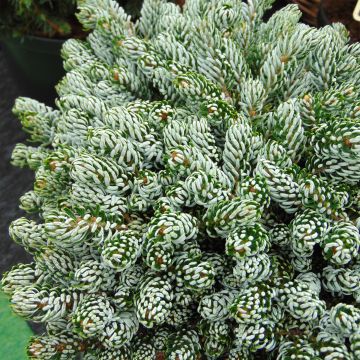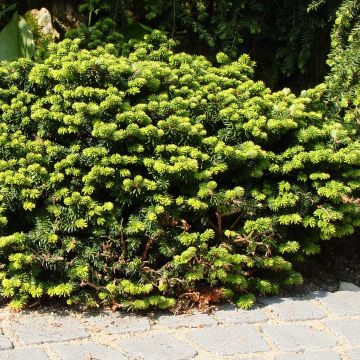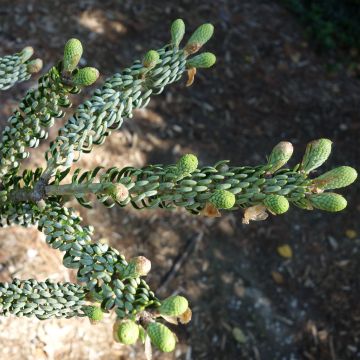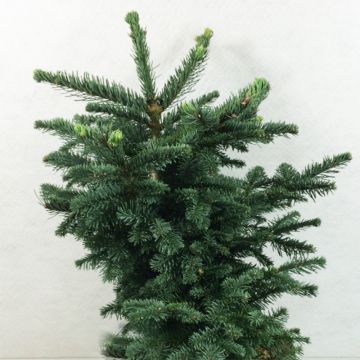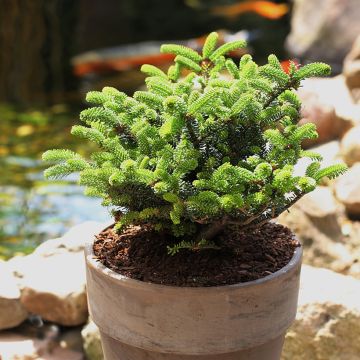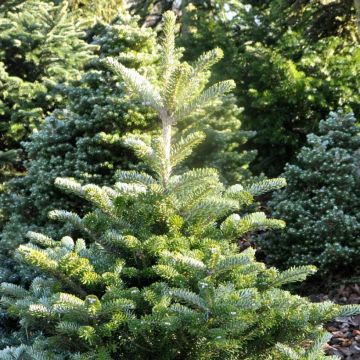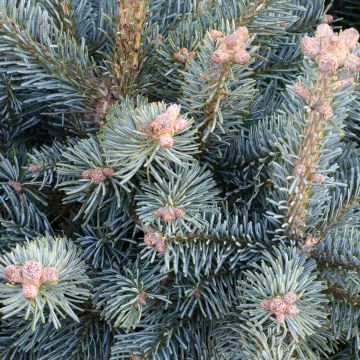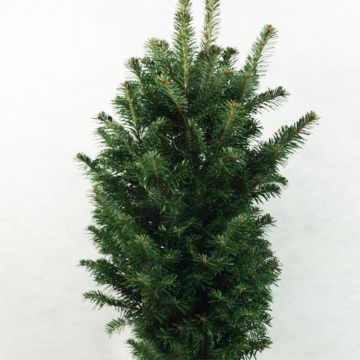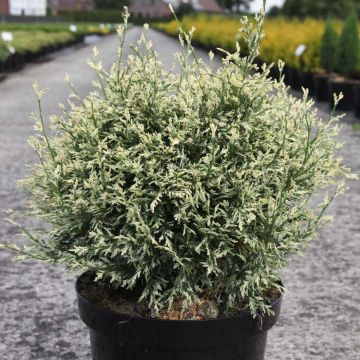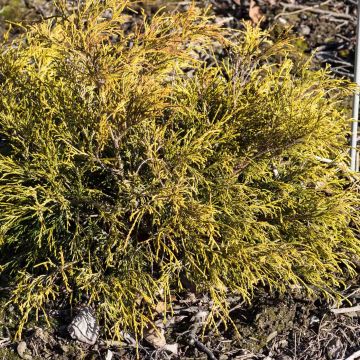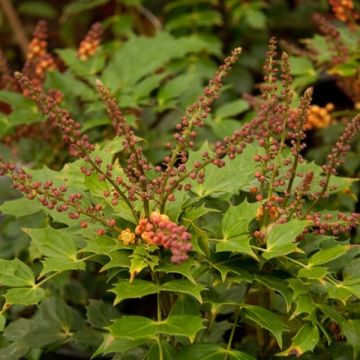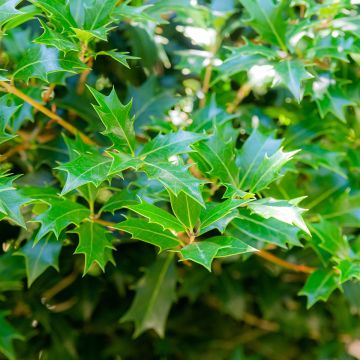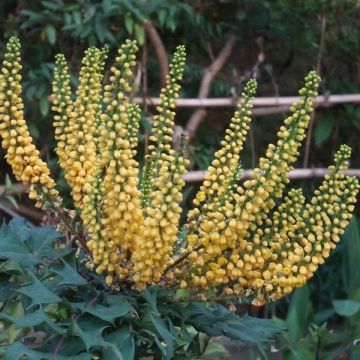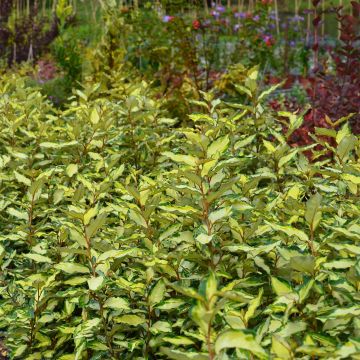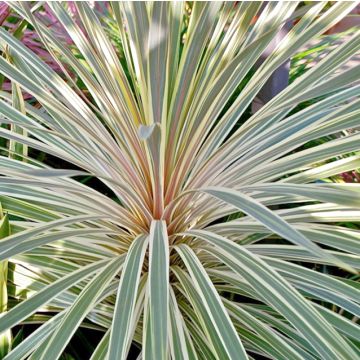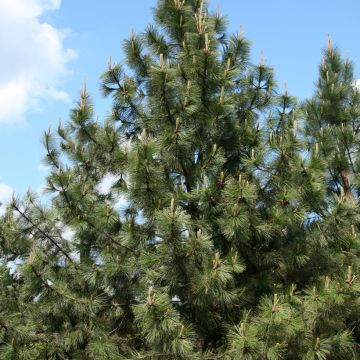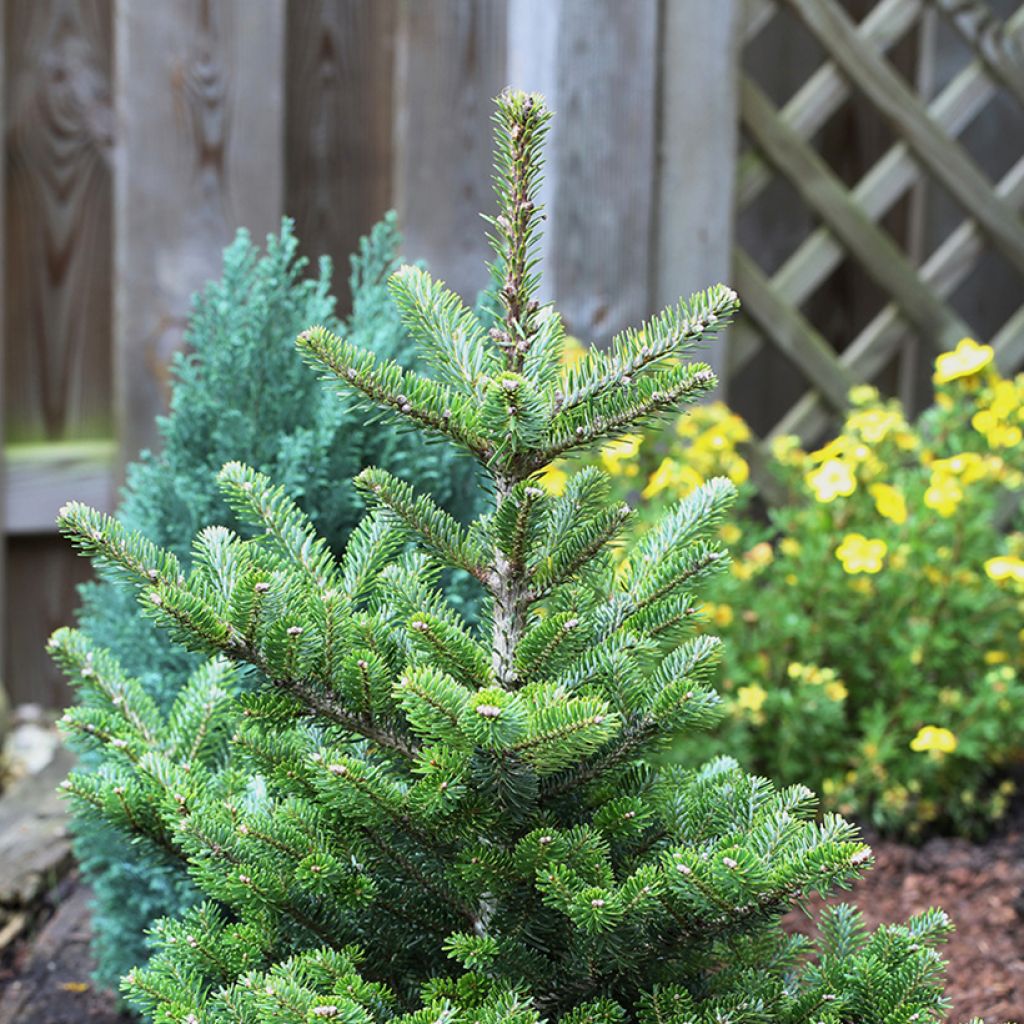

Abies koreana Molli - Korean Fir
Abies koreana Molli - Korean Fir
Abies koreana Molli
Korean Fir
Why not try an alternative variety in stock?
View all →This plant carries a 24 months recovery warranty
More information
We guarantee the quality of our plants for a full growing cycle, and will replace at our expense any plant that fails to recover under normal climatic and planting conditions.
From €5.90 for pickup delivery and €6.90 for home delivery
Express home delivery from €8.90.
Does this plant fit my garden?
Set up your Plantfit profile →
Description
Abies koreana Molli is a dwarf variety of Korean fir, forming a small conical tree over time. Its needles are dark green and shiny on the top and have a silvery colour on the underside. In spring, its young buds are initially an attractive bright green before darkening. In autumn, this small fir tree is adorned with very decorative, upright, bluish cones, even at a young age. In December, it can easily accommodate Christmas decorations, and is well-suited for it. Its small size makes it suitable for small gardens, in well-drained, moist soil, sheltered from scorching sun.
The Korean fir is a conifer of the pine family, native only to the mountains of the extreme south of Korea. This small conifer reaches a height of 6 to 9 m (20 to 29ft) in its natural environment and has a compact habit. The Molli variety is a more modest version as it does not exceed 2 m (7ft) to 2.5 m (8ft) in height at maturity, after about 20 years, growing at a rate of about 10 cm (4in) per year. Its conical and upright shape gives it an adult circumference of 1 m. It has a compact habit, made up of branches where very fine and flexible needles are flatly attached, dark green and shiny on the top. Beautiful upright purple cones appear on the plants in autumn, even when young.
Abies koreana Molli is ideal for a small garden or as a more modest feature in a larger garden thanks to its moderate growth and small size. The ornamental qualities of dwarf conifers naturally stand out in the design of a contemporary garden, which prefers the aesthetics of shapes, silhouettes, and textures over flowers. The strong personality of these architectural plants structurally and durably shapes a flower bed, marks pathways, and borders the terrace, easily replacing the strong presence of trimmed boxwood. Combine them with roses, peonies, or ornamental grasses with a complementary form that, in return, will showcase them. They can also be accompanied by ground cover plants like aubrietas or cerastiums, and flowering shrubs. The key is to play with volumes and colours.
Report an error about the product description
Abies koreana Molli - Korean Fir in pictures


Plant habit
Flowering
Foliage
Botanical data
Abies
koreana
Molli
Pinaceae
Korean Fir
Cultivar or hybrid
Other Abies
Planting and care
Plant Abies koreana Molli from September to November or from February to June, in regular, but very well-drained, even stony and rocky soil, enriched with humus, not too dry, in filtered sunlight or partial shade. This species is sensitive to heat and scorching sun. Regularly water the young plants during the two to three summers following planting. The Korean fir should be watered during prolonged periods of high heat. This bush does not require pruning, but any unsightly or obstructive branches can be removed.
Planting period
Intended location
Care
This item has not been reviewed yet - be the first to leave a review about it.
Evergreen shrubs
Haven't found what you were looking for?
Hardiness is the lowest winter temperature a plant can endure without suffering serious damage or even dying. However, hardiness is affected by location (a sheltered area, such as a patio), protection (winter cover) and soil type (hardiness is improved by well-drained soil).

Photo Sharing Terms & Conditions
In order to encourage gardeners to interact and share their experiences, Promesse de fleurs offers various media enabling content to be uploaded onto its Site - in particular via the ‘Photo sharing’ module.
The User agrees to refrain from:
- Posting any content that is illegal, prejudicial, insulting, racist, inciteful to hatred, revisionist, contrary to public decency, that infringes on privacy or on the privacy rights of third parties, in particular the publicity rights of persons and goods, intellectual property rights, or the right to privacy.
- Submitting content on behalf of a third party;
- Impersonate the identity of a third party and/or publish any personal information about a third party;
In general, the User undertakes to refrain from any unethical behaviour.
All Content (in particular text, comments, files, images, photos, videos, creative works, etc.), which may be subject to property or intellectual property rights, image or other private rights, shall remain the property of the User, subject to the limited rights granted by the terms of the licence granted by Promesse de fleurs as stated below. Users are at liberty to publish or not to publish such Content on the Site, notably via the ‘Photo Sharing’ facility, and accept that this Content shall be made public and freely accessible, notably on the Internet.
Users further acknowledge, undertake to have ,and guarantee that they hold all necessary rights and permissions to publish such material on the Site, in particular with regard to the legislation in force pertaining to any privacy, property, intellectual property, image, or contractual rights, or rights of any other nature. By publishing such Content on the Site, Users acknowledge accepting full liability as publishers of the Content within the meaning of the law, and grant Promesse de fleurs, free of charge, an inclusive, worldwide licence for the said Content for the entire duration of its publication, including all reproduction, representation, up/downloading, displaying, performing, transmission, and storage rights.
Users also grant permission for their name to be linked to the Content and accept that this link may not always be made available.
By engaging in posting material, Users consent to their Content becoming automatically accessible on the Internet, in particular on other sites and/or blogs and/or web pages of the Promesse de fleurs site, including in particular social pages and the Promesse de fleurs catalogue.
Users may secure the removal of entrusted content free of charge by issuing a simple request via our contact form.
The flowering period indicated on our website applies to countries and regions located in USDA zone 8 (France, the United Kingdom, Ireland, the Netherlands, etc.)
It will vary according to where you live:
- In zones 9 to 10 (Italy, Spain, Greece, etc.), flowering will occur about 2 to 4 weeks earlier.
- In zones 6 to 7 (Germany, Poland, Slovenia, and lower mountainous regions), flowering will be delayed by 2 to 3 weeks.
- In zone 5 (Central Europe, Scandinavia), blooming will be delayed by 3 to 5 weeks.
In temperate climates, pruning of spring-flowering shrubs (forsythia, spireas, etc.) should be done just after flowering.
Pruning of summer-flowering shrubs (Indian Lilac, Perovskia, etc.) can be done in winter or spring.
In cold regions as well as with frost-sensitive plants, avoid pruning too early when severe frosts may still occur.
The planting period indicated on our website applies to countries and regions located in USDA zone 8 (France, United Kingdom, Ireland, Netherlands).
It will vary according to where you live:
- In Mediterranean zones (Marseille, Madrid, Milan, etc.), autumn and winter are the best planting periods.
- In continental zones (Strasbourg, Munich, Vienna, etc.), delay planting by 2 to 3 weeks in spring and bring it forward by 2 to 4 weeks in autumn.
- In mountainous regions (the Alps, Pyrenees, Carpathians, etc.), it is best to plant in late spring (May-June) or late summer (August-September).
The harvesting period indicated on our website applies to countries and regions in USDA zone 8 (France, England, Ireland, the Netherlands).
In colder areas (Scandinavia, Poland, Austria...) fruit and vegetable harvests are likely to be delayed by 3-4 weeks.
In warmer areas (Italy, Spain, Greece, etc.), harvesting will probably take place earlier, depending on weather conditions.
The sowing periods indicated on our website apply to countries and regions within USDA Zone 8 (France, UK, Ireland, Netherlands).
In colder areas (Scandinavia, Poland, Austria...), delay any outdoor sowing by 3-4 weeks, or sow under glass.
In warmer climes (Italy, Spain, Greece, etc.), bring outdoor sowing forward by a few weeks.

































